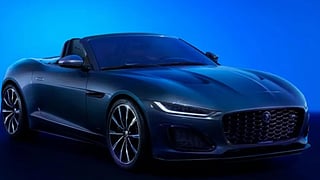The sales of trucks and tractors surged sequentially in March, reflecting higher agricultural movement ahead of the harvest season, but there are some incoming pains.
The commercial-vehicle category—light, medium and heavy—grew 14.50% sequentially to 94,764 units last month, according to the Federation of Automobile Dealers Associations. Tractor sales were up 12.87% month-on-month at 74,013 units.
“Gudi Padwa deliveries, supportive financing, and infrastructure activity elevated customer footfall,” FADA President CS Vigneshwar said. “However, major hurdles included aggressive targets and uneven product availability. Despite these challenges, the month closed on a positive note, buoyed by festive demand and the school-bus season.”
Truck rentals too are on an upswing, after a dip in February.
Among key freight routes, Delhi-Bengaluru registered the highest rental hike at 5% MoM, followed by Delhi-Mumbai at 1.3% and Delhi-Hyderabad at 1.1%.
But things can change quickly, and they are.
For example, the excise duty hike. Amid lower crude oil prices, the government has chosen to boost its earnings instead of passing on the benefit to the pump. That was one area CV operators were looking at saving cost, especially when toll rates have been revised higher. However, they expect tyre prices to drop.
“Industry is cautiously optimistic for new vehicle sales in April as the benefits of lower income tax for the new fiscal, coupled with local festivals like Tamil New Year, Vishu, and Akshaya Tritiya may prop up demand,” YS Chakravarti, chief executive officer at Shriram Finance Ltd., said in the company’s monthly mobility bulletin. “The falling stock market is impacting sentiment in urban pockets. Truck operators feel the need for reduction in fuel prices and tyre prices, consequent to a drop in international crude prices.”
FADA seemed to agree.
“Commercial vehicle retailers, bolstered by ongoing infrastructure projects and school-bus needs, hope to maintain the tempo of a strong March, but heatwave disruptions and global trade anxieties could quickly stall the momentum,” Vigneshwar said.
“By mid-month, it will become clearer whether this mix of cautious optimism and underlying fragility can carry the industry through—or if the intense pressures of summer and an unsteady global outlook will prompt another round of recalibration.”
The commercial-vehicle category—light, medium and heavy—grew 14.50% sequentially to 94,764 units last month, according to the Federation of Automobile Dealers Associations. Tractor sales were up 12.87% month-on-month at 74,013 units.
“Gudi Padwa deliveries, supportive financing, and infrastructure activity elevated customer footfall,” FADA President CS Vigneshwar said. “However, major hurdles included aggressive targets and uneven product availability. Despite these challenges, the month closed on a positive note, buoyed by festive demand and the school-bus season.”
Truck rentals too are on an upswing, after a dip in February.
Among key freight routes, Delhi-Bengaluru registered the highest rental hike at 5% MoM, followed by Delhi-Mumbai at 1.3% and Delhi-Hyderabad at 1.1%.
But things can change quickly, and they are.
For example, the excise duty hike. Amid lower crude oil prices, the government has chosen to boost its earnings instead of passing on the benefit to the pump. That was one area CV operators were looking at saving cost, especially when toll rates have been revised higher. However, they expect tyre prices to drop.
“Industry is cautiously optimistic for new vehicle sales in April as the benefits of lower income tax for the new fiscal, coupled with local festivals like Tamil New Year, Vishu, and Akshaya Tritiya may prop up demand,” YS Chakravarti, chief executive officer at Shriram Finance Ltd., said in the company’s monthly mobility bulletin. “The falling stock market is impacting sentiment in urban pockets. Truck operators feel the need for reduction in fuel prices and tyre prices, consequent to a drop in international crude prices.”
FADA seemed to agree.
“Commercial vehicle retailers, bolstered by ongoing infrastructure projects and school-bus needs, hope to maintain the tempo of a strong March, but heatwave disruptions and global trade anxieties could quickly stall the momentum,” Vigneshwar said.
“By mid-month, it will become clearer whether this mix of cautious optimism and underlying fragility can carry the industry through—or if the intense pressures of summer and an unsteady global outlook will prompt another round of recalibration.”
BEEP BEEP | Read | Watch | Listen
Retail car sales in India scaled the four-million mark for the first time in fiscal 2025, but the outlook hereon is hazy at best.
The Maharashtra government has put on notice Ola Electric over its local stores operating without a trade certificate, so much so that Transport Minister Pratap Sarnaik has called for immediate action against the company.
BMW India is unfazed by Tesla Inc.’s impending entry into India, as its managing director believes the move will only grow the EV space in the world’s largest car market.
JLR’s US Sales Surged Ahead Of A Shipment Pause
Jaguar Land Rover’s North American sales surged the most out of any region last quarter, underscoring the hit it will take from pausing US shipments response to new tariffs.
Wholesale volumes for the three months through March rose more than 14% from a year earlier, the British luxury sport utility vehicle maker said Monday. That outstripped an 11% increase in European sales, the next best-performing region.
The US is JLR’s most important market, accounting for roughly a quarter of its sales. The Range Rover manufacturer, which makes vehicles in the UK and Slovakia, said over the weekend it’s pausing shipments to the US for April, as it explores ways to navigate US President Donald Trump’s 25% auto tariffs that kicked in last week.
“The USA is an important market for JLR's luxury brands,” a spokesperson for the Range Rover maker had told NDTV Profit last week. “As we work to address the new trading terms with our business partners, we are enacting our short-term actions, including a shipment pause in April, as we develop our mid- to longer-term plans.”
Objects In The Mirror | This Day In Automotive History
On April 9, 1986, the French government ruled against the privatisation of Renault SA. The privatisation of Renault, France's second largest carmaker to PSA Peugeot-Citroen, has remained a highly debated issue since the 1986 decision.
In 1994, the government sold shares of Renault to the public for the first time at 165 francs per share. The sale dramatically increased the company's revenue, but Paris remained the majority shareholder.
Between 1996 and 1997, the market for cars in Europe grew precipitously, with the most marked increases in France. Renault, often scorned for its “public sector” policies, failed to capitalise on the growing markets. Instead, foreign competitors like Volkswagen and Fiat took advantage. Renault and Peugeot were the two weakest of Europe's Big 7 carmakers.
Economists blame the French carmakers’ lack of success on its protectionist policies, and more specifically on the unwillingness of PSA Peugeot and Renault to merge, a manoeuvre that would radically lower production costs for both auto-making giants.
It was eventually decided in 1996 that the company's state-owned status was detrimental to its growth, and Renault was privatised.
That’s all from us this week. Watch this space for more.

 RECOMMENDED FOR YOU
RECOMMENDED FOR YOU

Jaguar Land Rover Restarts Manufacturing Over A Month After Cyberattack Disruption
 Oct 07, 2025
Oct 07, 2025

Jaguar Land Rover Receives UK Guarantee For Rs 15,567 Crore Loan
 Sep 28, 2025
Sep 28, 2025

Cyberattack-Hit JLR Says Recovery Programme Underway, Systems Coming Back Online
 Sep 25, 2025
Sep 25, 2025

JLR Working With Supply Partners To Prioritise Payments: Tata Motors CFO
 Sep 25, 2025
Sep 25, 2025


